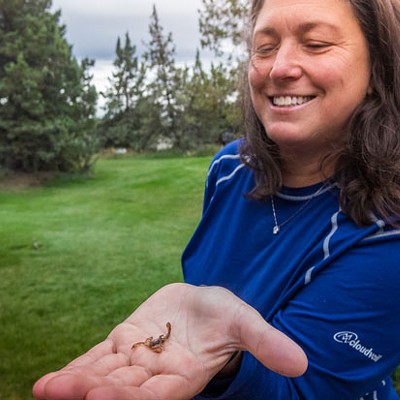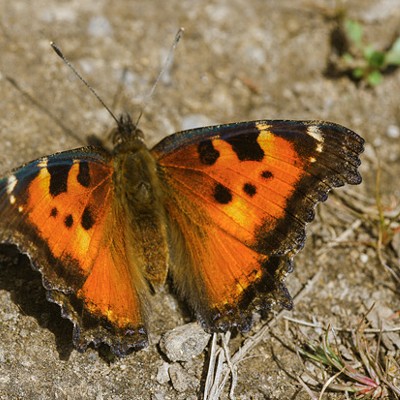For some reason that I cannot comprehend, someone, somewhere, somehow, back when the sun was a tiny thing, there weren't no Moon and the Big Dipper was a little drinkin' cup, got started on using the sloth as a whipping boy for the term, "slob."
I have been accused of using my column for venting my opinions (which is true), so hey, does that slow-moving vegetarian of the forests deserve such an image? I think not!
"Sloth" and "slothful" are terms that have been bothering me for a long time because they suggest a description that the sloth doesn't, in my opinion, deserve. Sloths living today—and even those of yesteryear—have these descriptions in Webster's Dictionary and other like publications, to whit: Idle, lackadaisical, lazy, otiose, shiftless.
Even my hero, Henry David Thoreau's definition of slothfulness bothers me to no end: "An unclean person is universally a slothful one; envious, slothful vice, never makes its way in lofty characters, but like the skulking viper, creeps."
"Slothfulness" is even (said to be) one of the Seven Deadly Sins in Christian moral tradition, referring to laziness, and also defined as spiritual or emotional apathy, neglecting what God has spoken, and being physically and emotionally inactive.
And what's really very disheartening is that the names for sloths used for food and fur by tribes in Ecuador include ritto, rit, and ridette—mostly forms of the words "sleep," "eat," and "dirty."
From my perspective, the following attribute may be why humans are still using the term slothful to characterize others who seem to be out of sync with the rest of animal life: sloths in the wild move only when necessary, and even then, v-e-r-y s-l-o-w-l-y; which is not their fault—they have about a quarter as much muscle tissue as other animals of similar weight.
Unlike most humans we know, sloths' specialized "hands and feet" have long, curved claws allowing them to hang upside down from branches without effort. (However, most anyone who has raised children has seen their kids do this as well...)
Sloths sometimes sit on top of branches, where they usually eat, sleep, and even give birth hanging from limbs, and sometimes even remain hanging from branches after death. (My wife Sue says the same about my afternoon naps when she finds me with my arms hanging outside the covers, knuckles on the floor of the bedroom.)
And here's another trait that may have helped humans debase sloths: they were thought to be among the most somnolent of mammals, sleeping from 15 to 18 hours each day. However, the Max Planck Institute for Ornithology in Starnberg, Germany, published a study indicating that sloths sleep just under 10 hours a day (while most of our afternoon naps are only for about an hour).
And how about this: sloths go to the ground to urinate and defecate—but only about once a week—and, unlike some of my old hunting buddies, a sloth will dig a hole and covers its leavings afterward, always at the base of the same tree to fertilize, but some people believe it's to avoid making noise while defecating from up high that would attract predators. It seems as though no one will give the sloth any credit for using its brains or for doing something "good."
The fossil sloth above is an example of the extended family of ground sloths that existed throughout the Americas, and died out approximately 11,000 years ago, when humans first entered their habitation. (Does that suggest that barbecued sloth may have been on the early pioneers' menu...?)
Just walking was a problem for those ancient giants; the size of their claws forced them to stand on the sides of their feet and to balance with their huge tail in order to reach the vegetation in trees. Then chewing their food was a problem; unlike most mammals, their teeth lacked enamel and were ever-growing.
For those interested in who and where these old timers lived, paleontologists have identified three distinct species that once ranged across what is the United States today: Paramylodon harlani, across the United States, especially the western states, lived in open park-like grasslands; Nothrotheriops shastensis, western United States and Florida, Texas, Mexico, found in drier habitat than harlani; and Megalonyx jeffersoni, Alaska, Northwest Canada, across the United States, living its life in forests in these parts.
They also liked spending time in caves and other under-the-surface areas, and some, such as the large mylodon sloths in South America, are believed to have dug giant-sized burrows where paleontologists found evidence of sloth bones and claw marks.
Now, that doesn't sound as though sloths were, "idle, lackadaisical, lazy, otiose or shiftless" does it? So, who pinned it on them and transferred the sloth's slow-moving, "leave-me-alone-and-I'll-leave-you-alone" way of life into something lazy or shiftless? Must have been the same ilk who says I'm as "wily" as a coyote.
So, there we have it; just because an animal moves slowly, appears to sleep long hours and is host to a wide array of beasties in its fur, they are used as an instrument of "slothful" thinking by humans. Doggone shame, ain't it?




























